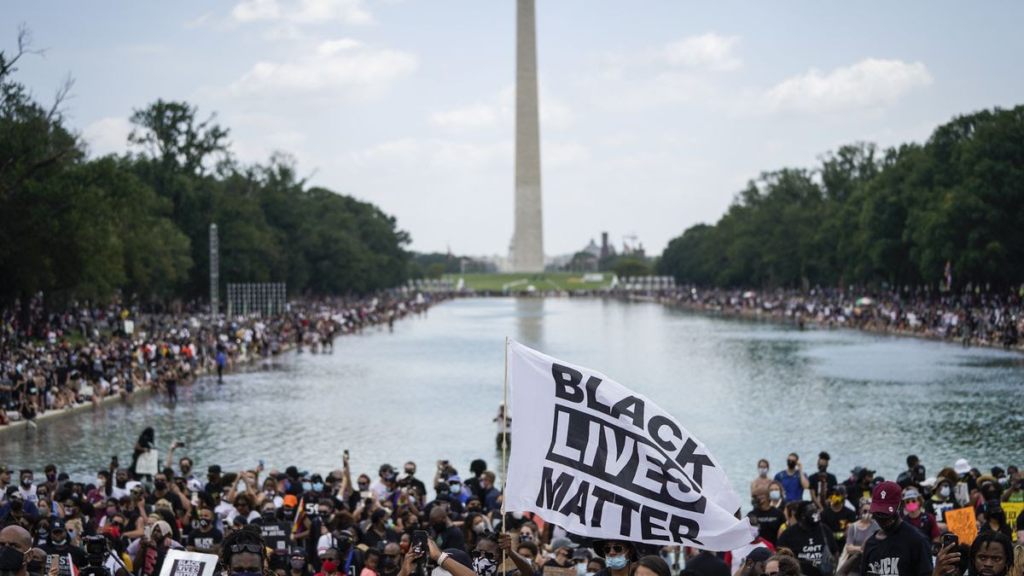March on Washington

Image courtesy of Vox
By Claire Prudhomme
On the 57th anniversary of the March on Washington led by Dr. Martin Luther King, Jr. in 1963, thousands of people gathered outside of the Lincoln memorial to continue the fight against social injustice problems with police brutality and systemic injustice against minority groups.
On Friday, August 28, people traveled from all over the country to listen to speakers and rally for the cause. The line of protesters began at the front of the Lincoln Memorial and continued nearly a half-mile to the Martin Luther King, Jr. Memorial.
The event was organized by the National Action Network more than a month in advance. People at the march were screened before entering the rally with temperature checks, and they were encouraged to social distance and wear masks.
A significant driving force behind the march were the events that occurred earlier that week with Jacob Blake and Kyle Rittenhouse. On Sunday, August 23rd, police responded to a domestic dispute call at the apartment building where Jacob Blake was. Raysean White, a neighbor, recorded the video that showed Blake walking to the driver’s side of his car and the police shooting him in the back seven times before Blake collapsed on the ground.
Just two days later, not far from where Blake was shot, 17-year-old Kyle Rittenhouse crossed state lines while armed in an attempt to help police keep the peace. As a part of a self-described citizen militia, Rittenhouse went to the Kenosha Black Lives Matter demonstrations, shot two people, and injured another after protestors attempted to disarm him.
These are just two events in a long list of injustices that have occurred in the past couple of months. At the rally, speakers honored George Floyd and Breonna Taylor, two prominent names that arguably triggered the resurgence of protests within the Black Lives Matter movement in June 2020.
Institutional racism and systemic racism in the justice system have been at the forefront of the Black Lives Matter movement. One of the many intentions of the March on Washington was to create reforms in government institutions. The event’s speakers encouraged people to register to vote, and they also called legislatures to revise and modernize the Voting Rights Act of 1965.
Sophomore sociology major Bailey Haraburda commented that Catholic University students, staff, and alumni have been trying to make change little by little.
“Our community at CUA needs to recognize the social injustices that occur around us in our daily lives,” Haraburda said. “The March on Washington was an event that showed change is necessary, and it can start at CUA even in the smallest corners of our campus.”
The March on Washington was just one of the many events that have occurred as a result of the Black Lives Matter movement, and many CUA students, staff, and alumni have spoken out against racial injustice. The Instagram account @blackatcua has received a lot of positive attention from the university in regards to being a safe space for students to anonymously share their experiences of racism at CUA.
The march occurred just 70 days before the 2020 presidential election. Both candidates, former Vice President Joe Biden and President Donald Trump, have made their own remarks regarding the Black Lives Matter movement. With the issue of race on the docket and both candidates’ opinions on the table, this election will surely show the way the country is heading in addressing racial injustice.







